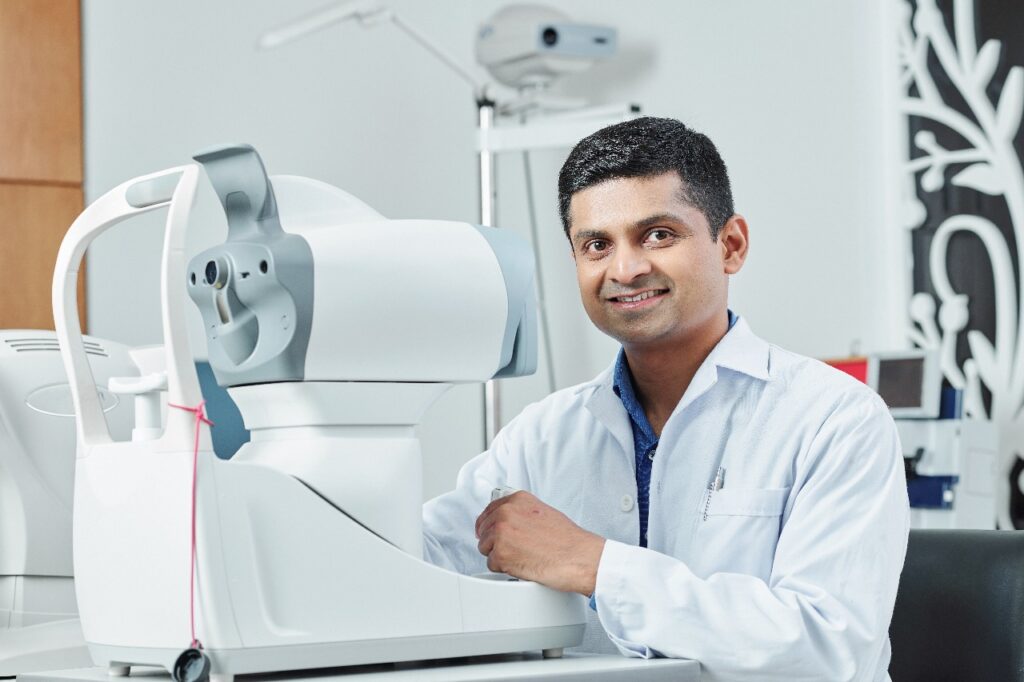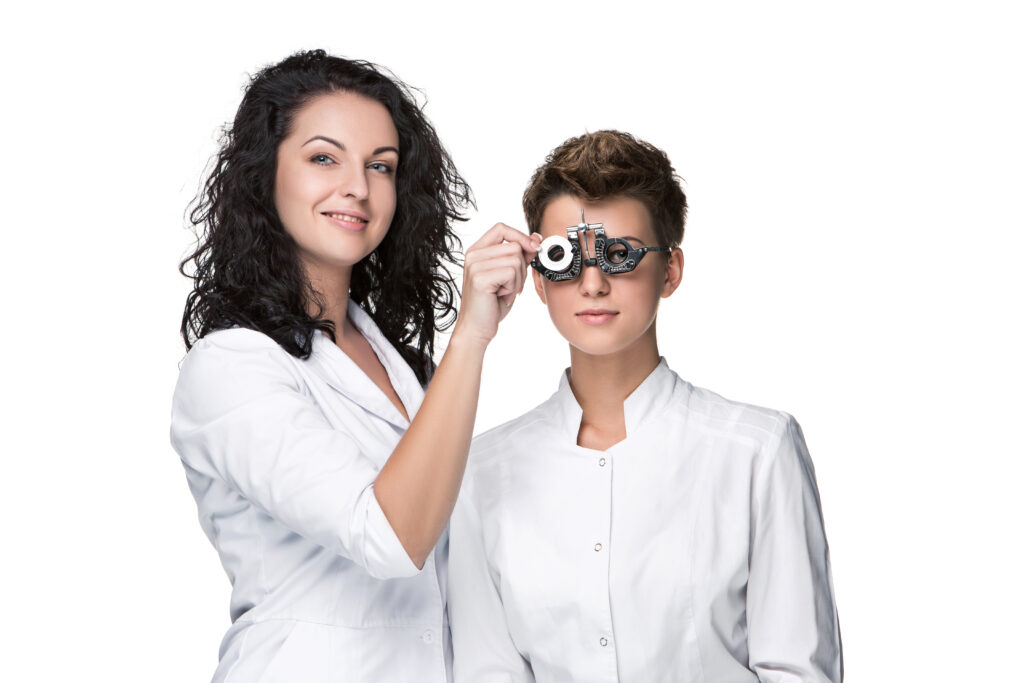AI and ML in diagnostics
- AI and ML in diagnostics
- Benefits of using AI in diagnostics
- Advantages of using high-efficient machines.
In recent years, the field of eye health has witnessed remarkable advancements, thanks to the integration of artificial intelligence (AI) and machine learning (ML) into diagnostic tools and techniques. These technological breakthroughs are transforming the way we detect, diagnose, and treat eye-related conditions, ultimately improving patient outcomes and quality of life.

AI and ML
One of the most promising applications of AI and ML in eye health is in the early detection of diseases such as diabetic retinopathy and age-related macular degeneration (AMD). AI-driven algorithms can analyze retinal images with unparalleled accuracy, detecting subtle changes that might escape the human eye. This early diagnosis enables timely interventions, preventing vision loss and enhancing patients’ overall well-being.
Furthermore, AI-powered telemedicine is revolutionizing eye care accessibility. Patients in remote or underserved areas can now access eye screenings and consultations through smartphone apps or web platforms. These applications employ ML algorithms to interpret images or videos of the eye, providing preliminary assessments and connecting patients with specialists when needed.

AI is also reshaping the field of refractive surgery. Surgeons can now use AI to customize laser vision correction procedures like LASIK, ensuring optimal outcomes for each individual. These algorithms consider unique corneal characteristics, patient preferences, and historical data to enhance the precision of these procedures.
Additionally, AI-driven virtual reality (VR) tools are revolutionizing vision therapy. Patients recovering from eye surgeries or suffering from conditions like amblyopia can engage in personalized VR exercises that adapt to their progress, speeding up recovery and improving visual function.

In conclusion, the integration of AI and ML in eye-related diagnostics represents a transformative shift in the field of eye health. These technologies enable earlier disease detection, improve accessibility to eye care, enhance surgical precision, and optimize vision therapy. As AI and ML continue to evolve, we can anticipate even more groundbreaking innovations that will contribute to preserving and improving the precious gift of sight
Recent Post
How to Choose the Best Eye Specialist Doctor in Badlapur
Selecting the best eye specialist doctor in Badlapur is one of the most crucial choices you can make to maintain your visual…
Best Eye Hospital in Thane for Advanced Eye Care
Nothing less than the finest will do when it comes to something as valuable as your eyesight. Locating a reliable, knowledgeable…
Eye Specialist Doctor in Thane for Advanced Treatment
One of your greatest advantages is your vision, therefore taking good care of your eyes is crucial. The best way to…




